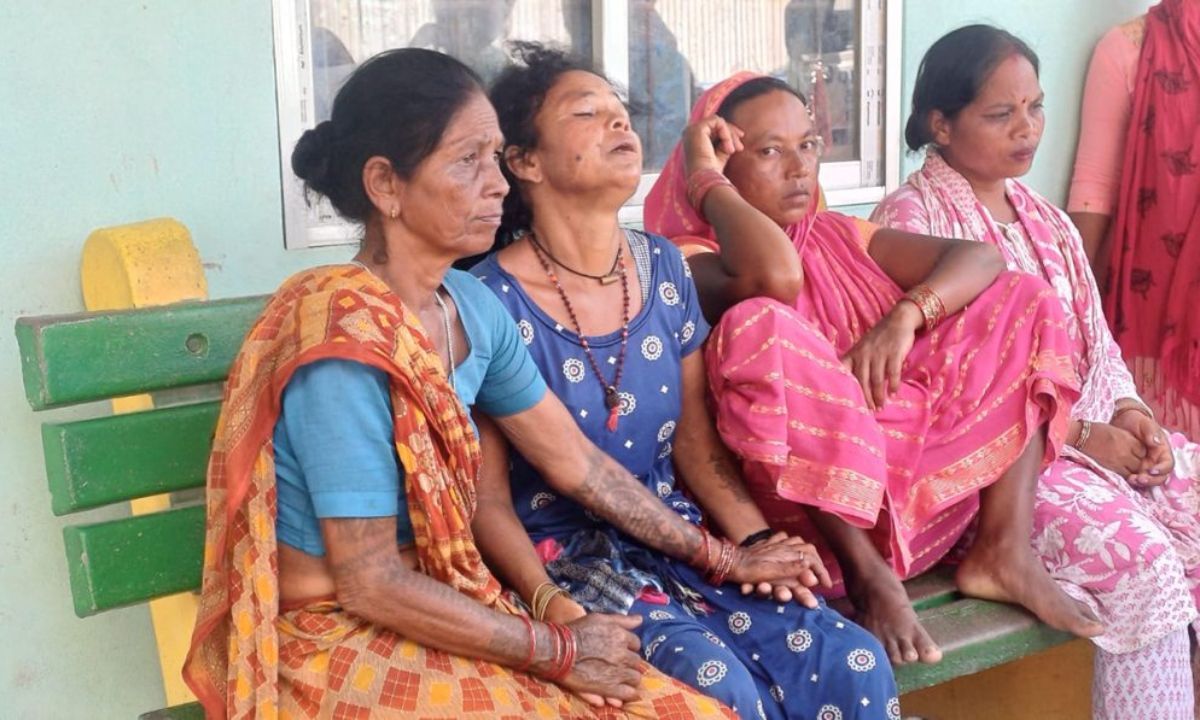Nepal’s rich musical heritage, deeply interwoven with its cultural tapestry, is now finding a deeper harmony within the walls of academia. From ancient oral traditions to modern university programs, the nation’s journey in music education reflects both a profound cultural continuity and a growing commitment to academic innovation. This report explores the historical evolution of Nepali music, the genesis and current landscape of its formal education, and the challenges and opportunities shaping its future.
The development of music education in Nepal reveals a fundamental tension between preserving its diverse, often unwritten, cultural heritage and the drive for formal academic legitimization. The historical context, rooted in oral traditions and varied folk practices, underscores the vital need for preservation. Conversely, the establishment of university programs signifies a push toward modernization and structured academic recognition. This suggests that the core challenge for Nepal’s music education is not merely adopting existing academic models but rather forging a unique framework that can effectively integrate and elevate its intangible, culturally specific musical expressions within a structured, graded academic environment. Success in this endeavor is crucial for maintaining Nepal’s distinct cultural identity in a globalized world.
Historical Echoes: Nepal’s Musical Journey
Historically, music in Nepal was deeply rooted in community life, serving as a medium for storytelling, spirituality, and social bonding across diverse ethnic groups. In the medieval and Vedic eras, knowledge was largely transferred informally through religious temples, courts, and folk communities, with the guru-shishya parampara (teacher-disciple tradition) dominating oral transmission across generations.
Specific examples of this rich tradition include the Gandharvas, also known as Gaineys, Nepal‘s traditional traveling minstrels who, with a sarangi in hand, sang ballads of love, war, and mythology from village to village. Their songs carried news, preserved history, and expressed cultural values. The Newars of the Kathmandu Valley developed complex classical music traditions, often performed in religious festivals and ceremonies, utilizing instruments like the dhimey, bhusya, and nya-khin. Similarly, the Tamang community contributed rhythmic and soulful Tamang Selo music, often accompanied by the damphu drum. Other communities, such as the Magar, Gurung, Maithil, and Tharu, also preserved their distinct musical identities, with songs celebrating nature, love, harvests, and rituals. These traditional genres were primarily oral, passed down without written notation.
Music in Nepal has always been intertwined with spirituality. Hindu and Buddhist traditions shaped sacred music practices such as bhajans (devotional songs), mantras, and chants, commonly performed in temples and monasteries with simple instruments like cymbals, bells, and the harmonium. Many cultural festivals, from the vibrant tunes of Tihar and Holi to the solemn rituals of Mahashivaratri and Buddha Jayanti, include musical elements that reinforce spiritual and communal connections.
The mid-20th century marked a pivotal turning point for Nepali music. With the establishment of Radio Nepal in 1951 and its recording studio by 1968, music began to reach a national audience. This period saw the rise of Adhunik Geet, or modern songs, a genre that blended traditional melodies with Indian classical and Western instruments. Artists like Narayan Gopal, Aruna Lama, Prem Dhoj Pradhan, and Tara Devi became national icons during what is often referred to as Nepal’s “golden era of music,” a time of significant creativity and emotional expression. This national reach provided an unprecedented platform for disseminating music across the country, leading to the popularization of Adhunik Geet and the rise of national icons. This was not merely a technological advancement; it was a powerful force for cultural unification. By broadcasting diverse musical styles and promoting certain artists nationally, Radio Nepal played a significant role in fostering a broader “Nepali” musical identity that transcended individual ethnic boundaries. This widespread exposure likely cultivated a greater appreciation for music across various segments of society and implicitly created a demand for more formalized training and preservation, subtly laying the groundwork for future institutional growth in music education.
The 1980s and 90s introduced new influences, with Western pop and rock music gaining popularity among the youth. Artists like Om Bikram Bista and bands such as 1974 AD and Nepathya incorporated electric guitars, drum sets, and fusion genres. Nepathya, in particular, gained fame for combining folk melodies with rock, addressing themes of love, patriotism, and social issues. Other notable contributors to the rock scene included The Edge Band, Robin and the New Revolution, and Cobweb.
The 2000s witnessed the emergence of Nepali hip-hop and rap culture, inspired by global movements. Young artists like Laure, VTEN, and Sacar brought underground music to the mainstream, using powerful lyrics and beats to express their experiences and hopes. Simultaneously, the growth of digital platforms—YouTube, TikTok, and SoundCloud—empowered independent musicians to create, share, and find audiences without traditional gatekeepers. Artists such as Sajjan Raj Vaidya, Tribal Rain, Yugal Gurung, and Bartika Eam Rai represent a new wave of musicians blending acoustic, R&B, indie, and experimental genres with personal storytelling. While university-level music education remains geographically concentrated, the practice, production, and consumption of modern Nepali music are increasingly decentralized and democratized through digital means. This presents both a significant opportunity, enabling wider reach for artists, fostering new talent, and diversifying genres, and a critical challenge for formal academic institutions. Universities must adapt their curricula to embrace digital music production, online performance, and digital marketing strategies to remain relevant and attractive to young musicians who can achieve mainstream success and build careers outside traditional academic pathways.
Throughout its history, music in Nepal has also served as a potent tool for resistance and healing. During the Maoist conflict, songs became instruments of protest and awareness. Following the 2015 earthquake, music was utilized to unite communities, raise funds, and offer emotional relief. Similarly, during the COVID-19 pandemic, virtual concerts and home recordings helped people stay connected and uplifted, affirming music’s role as a source of comfort, inspiration, and resilience. Today, Nepal’s music scene is more diverse than ever, balancing the preservation of endangered folk traditions with the embrace of global sounds. Institutions, music schools, and festivals like Jazzmandu are helping bridge generations and genres. However, challenges remain, particularly in archiving traditional music, supporting grassroots artists, and creating fair platforms for creators.
The Genesis of Formal Music Education
Formal music education in Nepal began with a significant step in 1894, with the establishment of Lalitkala Campus (Nepal Art School) in Kathmandu, which offered structured education in fine arts, including music. Decades later, in the 1960s, Padma Kanya Women’s Campus, part of Tribhuvan University, further expanded offerings by introducing undergraduate music and dance programs.
The political centralization during the Panchayat regime (1962–90) explicitly stunted broader growth in music academia. This period saw a direct cause-and-effect relationship: centralized, potentially authoritarian regimes often prioritize disciplines deemed economically or politically strategic, potentially viewing arts education as less critical or even a luxury. Such regimes might also be wary of the arts as a medium for dissent or independent thought, leading to underinvestment or control.
A new era for music education dawned after the restoration of democracy in 1990, leading to considerable expansion. By the 2000s, both Tribhuvan University (TU) and Kathmandu University (KU) established comprehensive bachelor’s and master’s programs in music, emphasizing classical, folk, and ethnomusicological studies. Democratic governance, by contrast, tends to foster an environment where cultural preservation, academic freedom, and diverse forms of expression are more valued. This shift in political ideology and governance structure directly enabled the institutional growth and expansion of music education, suggesting that a supportive political climate is a fundamental prerequisite for the flourishing of academic disciplines like music.
Complementing university efforts, the Nepal Academy of Music and Drama, established in 1957, and the Nepal Music Center, founded in 2006, further institutionalized training, archiving, and performance, laying essential groundwork for a national musical education framework. While Radio Nepal began catalyzing a national musical identity in the 1950s and 60s, creating a widespread appreciation for music, significant expansion of formal, university-level music programs only occurred by the 2000s. This represents a substantial time lag between the organic, popular development of music and its formal integration into higher education. Even the early establishment of Lalitkala Campus in 1894 was an isolated instance, not indicative of a widespread academic movement. This delay suggests that Nepal’s academic system was slow to recognize the intellectual and cultural value of its vibrant musical traditions for formal study. Possible reasons include a historical emphasis on other disciplines, a lack of perceived economic utility for music degrees, or the inherent challenges in formalizing an art form primarily transmitted orally. This lag has significant ripple effects, contributing to current challenges such as the absence of a Ph.D. program and faculty shortages, as the academic infrastructure for music is still relatively nascent compared to the depth and breadth of the nation’s musical heritage.
Current Landscape of University-Level Music Education
University-level music education remains primarily centralized within the Kathmandu Valley. Two major institutions anchor the field. Tribhuvan University’s Lalitkala Campus offers a Bachelor of Fine Arts (BFA) in classical music (vocal and instrumental) and a Master’s in Music. Its Central Department of Fine Arts in Kirtipur offers M.A. degrees in Music and Tabala. Affiliated campuses like Padma Kanya and Saraswati Campus offer additional undergraduate programs. Kathmandu University’s School of Arts offers a four-year B.Mus (Honours in Ethnomusicology) and a two-year M.Mus program, with an emphasis on Nepal’s folk traditions, Hindustani classical music, and cross-cultural studies.
Curricula at these universities cover theory, composition, performance, musicology, and research. Degree lengths follow standard Nepali university formats: four years for bachelor’s, two years for master’s. Notably, no Ph.D. in music exists yet. Outside of TU and KU, no other Nepali university offers dedicated music degrees. Private teaching occurs primarily in Kathmandu-based institutions like the Nepal Music Center.
According to the 2023 University Grants Commission (UGC) EMIS Report, music program sizes remain small despite general higher education enrollment growth. Most graduates pursue careers in teaching, performance, or cultural administration. UNESCO estimates cultural industries can create up to 50 million jobs globally, indicating untapped potential.
The following table provides a statistical overview of university music program enrollment in 2023:
University Music Program Enrollment (2023 UGC EMIS Report)
| University | Program | Total Enrollment | Male | Female |
| KU School of Arts | B.Mus (Ethnomusicology) | 134 | 122 | 12 |
| KU School of Arts | M.Mus | 11 | 10 | 1 |
| KU School of Arts | BFA (Fine Arts) | 202 | ~70% | ~30% |
| TU Lalitkala Campus | B.A. Music | 106 | N/A | N/A |
| TU Kirtipur Campus | M.A. Music | 14 | 8 | 6 |
| TU Kirtipur Campus | M.A. Tabala | 7 | N/A | N/A |
The data in this table quantifies the small program sizes, with some master’s programs having very limited student numbers, such as KU’s M.Mus with 11 students and TU Kirtipur’s M.A. Tabala with 7. This directly illustrates the limited scale of current enrollment. By presenting enrollment figures exclusively for Tribhuvan University and Kathmandu University, both located within the Kathmandu Valley, the table visually reinforces the narrative of centralization and urban bias. The absence of data for other regions implicitly underscores the lack of formal music education opportunities outside the capital. Furthermore, the male/female breakdown for several programs, notably KU B.Mus with 122 male and 12 female students, directly substantiates the gender gap challenge, where women make up only 34% of enrolled music students. These specific enrollment numbers provide a baseline for assessing current capacity and identifying areas where expansion is most urgently needed, particularly for underrepresented demographics or regions.
The repeated emphasis on music education being centralized within the Kathmandu Valley and the statistic that less than 10% of music programs exist outside the Kathmandu Valley is not merely a geographical observation. It directly correlates with the observation from Nimesh Bista, a music educator from Pokhara, who noted, “Young talents from outside Kathmandu are being left behind due to lack of access”. This extreme centralization creates a significant barrier to access for aspiring musicians residing in rural or non-Kathmandu areas. This leads to either a migration of talent to the capital for formal training or, more critically, the stifling of potential talent that cannot afford or is unwilling to relocate. Furthermore, it limits the diversity of traditional and regional musical forms that enter formal academic settings, potentially leading to curricula that disproportionately represent Kathmandu‘s musical heritage over the nation’s broader and richer tapestry of sounds.
The explicit statement that no Ph.D. in music exists yet in Nepal is a critical finding, especially when viewed in comparison to regional neighbors like India and Bangladesh, which do offer Ph.D. programs in music. This directly links to the identified faculty shortage, specifically the lack of Ph.D.-level instructors. The absence of a domestic doctoral program creates a severe bottleneck for developing high-level academic leadership, advanced research capacity, and a self-sustaining faculty pipeline within Nepal’s music education system. It forces aspiring Nepali music scholars to seek Ph.D. degrees abroad, which can lead to brain drain if they do not return, or a reliance on foreign-trained faculty whose research interests might not always align perfectly with Nepal’s unique musical heritage. This fundamentally hinders the development of indigenous musicological research and the ability to produce future generations of top-tier faculty, thereby perpetuating the existing faculty shortage.
The UNESCO estimate of up to 50 million jobs globally in cultural industries presents a massive global opportunity. However, this stands in stark contrast to the small music program sizes in Nepal and the sparse employment data for graduates, who primarily pursue teaching, performance, or cultural administration. This highlights a significant missed opportunity and a potential misalignment between academic training and emerging economic realities. While Nepal possesses a rich musical heritage and a growing creative economy, with festivals, music tourism, and digital platforms noted as opportunities, the limited academic output and the lack of a clear, diversified career pathway beyond traditional roles suggest a disconnect. Universities might not be adequately preparing students for the full spectrum of roles within the broader creative economy, or the prevailing societal attitudes that view music more as a hobby than a profession actively discourage enrollment despite the global potential.
Challenges and Opportunities in Nepal’s Music Academia
Nepal’s university-level music education faces several significant obstacles, alongside promising avenues for growth.
Key Challenges
A significant and persistent faculty shortage, particularly a lack of Ph.D.-level instructors and other qualified teachers, is a major impediment to the growth and quality of music education. This issue is compounded by a stark
funding gap; there is an average of NPR 5,000 per-student investment in music programs compared to NPR 18,500 in STEM fields. Music is notably not prioritized in national grants, further limiting resources. This underinvestment is part of a negative feedback loop: if society perceives music as a hobby rather than a viable career, there is less public and political will to invest significantly in its formal education. This low societal valuation directly leads to reduced government funding and prioritization in national budgets. This chronic underinvestment, in turn, results in inadequate infrastructure, fewer qualified faculty, limited program expansion, and a lack of attractive career pathways. These deficiencies then reinforce the societal perception that music is not a serious or professional pursuit, thus completing a self-perpetuating cycle of marginalization.
The urban bias is another critical challenge, with less than 10% of music programs existing outside the Kathmandu Valley. This leads to a situation where “Young talents from outside Kathmandu are being left behind due to lack of access,” as observed by music educator Nimesh Bista from Pokhara. Furthermore, a notable
gender gap exists, with women constituting only 34% of enrolled music students, indicating a significant disparity in participation. Underlying these issues,
societal attitudes continue to perceive music more as a hobby or a recreational pursuit rather than a viable and respected profession.
Emerging Opportunities and Innovations
Despite these hurdles, several trends point toward promise for music education in Nepal. Digital learning is a growing trend, with online lessons and content sharing via platforms such as YouTube, Zoom, and Learning Management Systems (LMS) offering new avenues for education and outreach. This presents a powerful, scalable, and potentially cost-effective solution to directly address the geographical barriers and mitigate the urban bias in music education. By leveraging online learning, Nepal can democratize access to quality music education across the country, reaching students in remote areas without the prohibitive cost and logistical challenges of establishing extensive physical university infrastructure in every district. This approach could also be a strategic way to address the funding gap by maximizing the reach and impact of existing educational resources, aligning with the independent music scene’s successful reliance on digital platforms.
Cultural archives are being strengthened, with Kathmandu University and the Nepal Music Center actively engaged in digitizing folk music archives, a crucial step for preservation and future academic and public access.
International projects are also fostering growth; collaborative initiatives, such as the “Global Visions” project, have successfully linked KU and the Nepal Music Center with Finnish and Israeli institutions to train music educators, fostering cross-cultural exchange and capacity building. Given Nepal’s current inability to produce a sufficient number of its own Ph.D.-level music faculty, international collaborations serve as a crucial, albeit temporary, mechanism to bridge this critical gap. These partnerships provide invaluable access to external expertise, advanced pedagogical methods, and potentially even faculty exchange programs. This external support is vital for capacity building, curriculum development, and raising the academic standards of music education in Nepal while the nation works towards establishing its own robust advanced degree programs and a sustainable local faculty pipeline.
Finally, the burgeoning creative economy offers significant potential; Nepali festivals, music tourism, and digital platforms are identified as significant new job avenues for music graduates, aligning with UNESCO’s global estimates for the cultural industries’ job creation potential.
The following table provides a comparative regional context for music education offerings, highlighting Nepal’s position:
Comparative Regional Music Education Offerings
| Country | Music Degrees Offered | Ph.D. Available | Infrastructure Level |
| India | B.Mus, M.Mus, Ph.D. | Yes | Extensive |
| Bangladesh | B.A., M.A., M.Phil, Ph.D. in Music | Yes | Moderate |
| Nepal | BFA, B.Mus, M.A., M.Mus | No | Developing |
| Bhutan | Non-degree courses | No | Minimal |
This table directly benchmarks Nepal’s music education system against its immediate regional neighbors. It provides a clear, at-a-glance understanding of Nepal’s relative standing in terms of academic offerings, research capabilities, and overall infrastructure. The “Ph.D. Available” row explicitly and starkly illustrates that both India and Bangladesh offer doctoral programs in music, whereas Nepal does not. This quantifies the Ph.D. gap and underscores the urgent need for such a program within Nepal to achieve academic self-sufficiency, foster advanced research, and produce its own high-level faculty, thereby reaching parity with regional leaders. The “Infrastructure Level” column, categorizing Nepal’s infrastructure as “Developing” in contrast to India’s “Extensive” and Bangladesh’s “Moderate,” helps explain the underlying reasons for challenges like faculty shortages, limited program expansion, and urban bias – the foundational academic and physical infrastructure for music education is still in its nascent stages of development. For policymakers and educational planners, this comparative data offers a clear roadmap for what Nepal needs to aspire to, demonstrating that regional peers have successfully established more comprehensive and robust music education systems.
Government Policies and Support Mechanisms
Nepal’s education framework has formally recognized music since the 2013 National Curriculum Framework, which introduced music into grades six through eight. Further, in 2016, a technical/vocational music curriculum was piloted via the Nepal Music Center. These policy-level recognitions of music’s importance within the national education system are significant. However, this is immediately contradicted by the subsequent statements that few schools possess the necessary faculty or resources to deliver quality music education, and that music is not prioritized in national grants when compared to STEM fields. This highlights a critical and pervasive gap between stated policy intent and practical implementation. While music education is formally acknowledged, it is not being adequately resourced financially or structurally. This suggests that the government’s commitment to music education is currently more rhetorical than substantive, leading to a situation where well-intentioned policies exist on paper but cannot be effectively executed in schools and universities. This perpetuates the challenges of faculty shortages, poor infrastructure, and limited access, ultimately hindering the real-world impact of these policies.
Despite these policy efforts, few schools possess the necessary faculty or resources to deliver quality music education. The Nepal Academy of Music and Drama, operating with an annual budget of NPR 25 million, struggles significantly to meet the rising demand for music education and cultural preservation. Critically, music is not prioritized in national grants when compared to STEM fields.
In contrast to governmental limitations, Non-Governmental Organizations (NGOs) like the Nepal Music Fund offer crucial scholarships, and international foundations, including Finnish, Swiss, and Indian entities, provide significant support for ethnic music education initiatives. Given the explicit mention of the government’s budgetary constraints and its lack of prioritization in national grants for music, the concurrent mention of NGOs and international foundations becomes highly significant. These external entities are stepping in where governmental support is lacking. This suggests that non-governmental and international support is currently playing a crucial, almost compensatory, role in sustaining and developing specific aspects of music education in Nepal, particularly in areas like scholarships and ethnic music preservation. While invaluable, this reliance on external aid might lead to fragmented efforts or a lack of a cohesive, long-term, and sustainable national strategy if not eventually integrated into a more robust and adequately funded government framework. It also indicates that certain areas, like ethnic music education, attract more international interest, potentially shaping the focus of some programs more than national priorities might otherwise dictate.
The Path Forward: Recommendations for Growth
To realize the full potential of music education in Nepal, a multi-pronged approach is necessary.
First, to address the significant urban bias and increase access for talent nationwide, music programs must be strategically expanded beyond the Kathmandu Valley. This geographical decentralization is crucial for nurturing talent across the country.
Second, developing a comprehensive national music teacher training framework is essential to address the critical faculty shortage and ensure consistent, high-quality instruction across all levels of education. This will build a sustainable pipeline of qualified educators.
Third, a substantial increase in cultural education budgets and dedicated scholarships is necessary to bridge the existing funding gap, attract more students to music programs, and incentivize professional careers in music. This financial commitment is fundamental to supporting the sector’s growth.
Fourth, introducing a Ph.D. program in music is crucial to foster advanced research, produce a new generation of highly qualified faculty, and achieve academic self-sufficiency, aligning Nepal with regional leaders. This step is vital for elevating the academic rigor and international standing of Nepali music studies.
Finally, strengthening digital infrastructure for music learning and archiving is vital, leveraging the opportunities presented by online platforms and current cultural preservation efforts to enhance accessibility and reach. This will allow for broader dissemination of knowledge and preservation of heritage.
These recommendations are profoundly interconnected and mutually reinforcing. For example, establishing a Ph.D. program directly addresses the faculty shortage challenge, which is a prerequisite for expanding music programs and developing a national music teacher training framework. Increased financial budgets are necessary to fund all these initiatives. Digital infrastructure, in turn, can significantly support both program expansion by enabling remote learning and teacher training through online modules. This interconnectedness implies that isolated, piecemeal initiatives will likely yield limited results. A truly effective path forward requires a holistic, coordinated national strategy where investments in one area are designed to amplify benefits across others. Policymakers must view these recommendations as components of an integrated ecosystem, understanding that progress in one area often depends on simultaneous advancements in others.
As emphasized by UNESCO, cultural education is a fundamental key to inclusive growth and national development. This connects back to the creative economy opportunity and the UNESCO estimate of up to 50 million jobs globally in cultural industries. The recommendations are not merely about academic development for its own sake but about strategically transforming Nepal’s rich and diverse musical heritage into a tangible economic and soft-power asset. By making strategic investments in teachers, institutions, and ensuring broader access, Nepal can effectively elevate its rich musical heritage into a globally respected academic tradition and a vibrant component of its creative economy. This reframes investment in music education from a perceived cost center to a strategic investment in national development and international influence.






